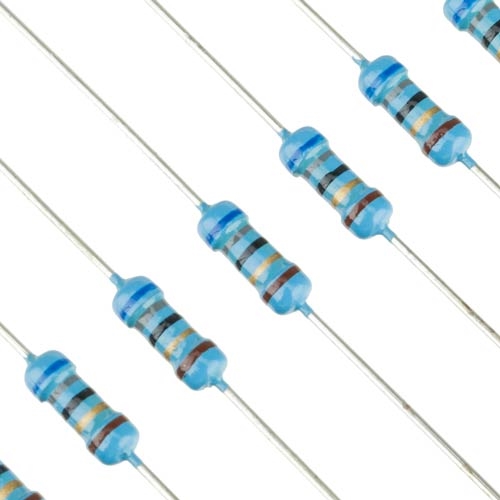A 68Ω (ohms) 1/4 watt resistor is designed to provide a specific resistance value in electronic circuits, with a power dissipation capacity of up to 0.25 watts. It is commonly used in various electronic and electrical applications where precision and low power dissipation are required.
Key Features:
- Resistance: 68Ω
- Power Rating: 1/4W (0.25 watts)
- Tolerance: ±5% (commonly), with ±1% available for precision applications
- Temperature Coefficient: Typically ±100ppm/°C or ±200ppm/°C
- Resistance: 68Ω
- Power Rating: 1/4W (0.25 watts)
- Tolerance: ±5% (J), ±1% (F), depending on the type
- Temperature Coefficient: ±100ppm/°C or ±200ppm/°C
- Operating Temperature Range: -55°C to +155°C
- Body Size: Typically through-hole with axial leads (1/4W size)
- Material: Carbon film, metal film, or metal oxide, depending on the resistor type
- Current Limiting: Used to limit the amount of current flowing through a circuit.
- Voltage Dividers: Helps create precise voltage references and divisions in circuits.
- Biasing: Sets bias points in various electronic components.
- Signal Conditioning: Adjusts signal levels to appropriate values.
- Placement: Insert the resistor into the circuit board or component slot.
- Insertion: Pass the leads through the board’s holes or slots.
- Soldering: Solder the leads securely and trim any excess.
- Verification: Check the resistor’s value with a multimeter to ensure it meets the specification.
- Power Dissipation: Do not exceed the 0.25-watt power rating to avoid overheating and potential damage.
- Voltage Rating: Ensure that the resistor’s voltage rating is suitable for your circuit.
- Handling: Handle carefully during installation to avoid damage.



